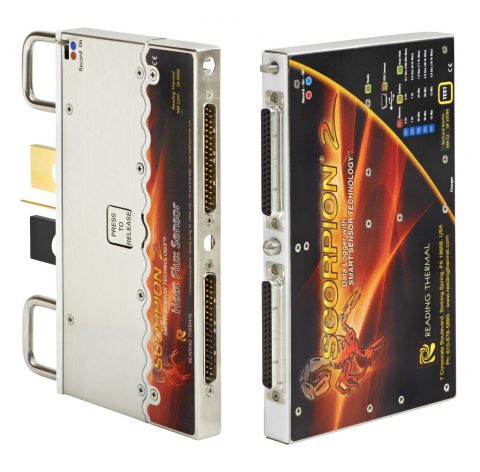Reading Thermal performs industrial bakery oven safety inspections to help customers meet OSHA regulations. No matter what manufacturer built your oven, our team has the expertise to profile and inspect it with the SCORPION® 2 Profiling System.
Headquartered in Sinking Spring, Pennsylvania, Reading Thermal has been at the forefront of measuring and researching the commercial baking process for more than 25 years. We manufacture and support the SCORPION® 2 Data Logger, which enables bakers to monitor actual in-process conditions and gather the critical information they need to correct problems and maintain optimum process control.
OSHA Safety Regulations for Bakery Ovens
Section 1910.263 of the OSHA regulations covers oven safety inspections:
(1)(vii) “Ovens shall be located so that possible fire or explosion will not expose groups of persons to possible injury. For this reason, ovens shall not adjoin lockers, lunch or sales rooms, main passageways or exits.”
(9) (ii) “All safety devices on ovens shall be inspected at intervals of not less than twice a month by an especially appointed, properly instructed bakery employee, and not less than once a year by representatives of the oven manufacturers.”
Choose Reading Thermal for OSHA Oven Safety Inspections
When you rely on us for oven safety inspections, you can be confident that you are complying with OSHA regulations. You will also get a benchmark of your oven’s performance with regard to temperature, air velocity, and heat flux, providing a baseline for yearly comparisons. Our inspections can also help you avoid issues with your insurance carrier by documenting the operation of all safety devices.
Measure Essential Baking Parameters
1) Temperature: Oven temperature impacts oven-spring, drying/dehydration, and color formation during baking. Temperatures that are too low or too high can also lead to unwelcome changes in product texture and taste. The Scorpion® 2 Temperature Sensor Array measures temperatures at product level, in fixed positions across the conveyor, and delivers a precise picture of temperatures from side-to-side and end-to-end.
2) Humidity: The new SCORPION® 2 Digital Humidity Sensor measures the absolute moisture content of the thermal environment in both heating and cooling processes. The sensor travels through the oven with your product, yielding a precise profile of moisture experienced by the product. This new Digital Humidity Sensor has a breakthrough design that provides a better way to measure humidity in your oven, proofer, dryer and cooling tunnel.
3) Heat flux: Many product characteristics are defined by the amount and type of heat that is applied during the baking process. The differences explain why one oven bakes differently than another. And analyzing and controlling these differences is important in understanding how they will affect the finished characteristics of a product. The SCORPION® 2 Heat Flux Sensor measures radiant and heat fluxes at product level and displays the results in Btu/hr·ft2 or convective W/m2.
4) Air velocity: In a convection oven, airflow comes primarily from the air distribution plenums. In a radiant oven, it comes from the moving conveyor, the exhaust system, and natural combustion air currents. Measuring oven air velocity with the SCORPION® 2 Air Velocity Sensor is critical because airflow influences the texture, firmness, coloration, and baking time of the final product. The profiles will help you spot airflow differences between baking zones and undesirable air currents at the entrance or exit of the oven that can cause inconsistent baking.
Contact Reading Thermal online or call our headquarters in Sinking Spring, Pennsylvania at (610) 678-5890 Ext. 2 to learn more about our industrial bakery oven safety inspection services.

